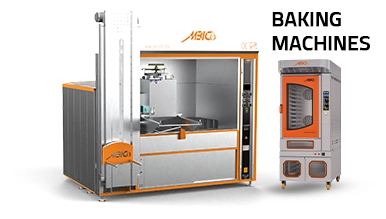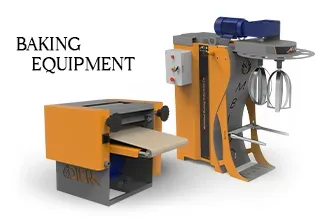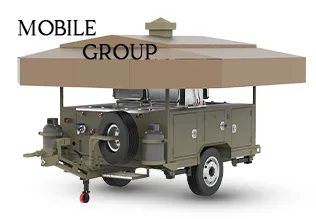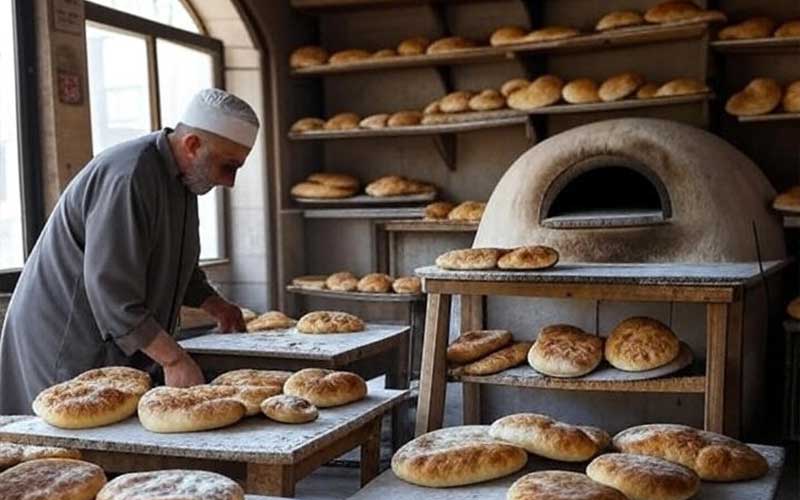Articles
A Baker’s Journey Across the Globe: Unveiling the Rich Tapestry of Regional Breads
Bread. It’s more than just sustenance; it’s a universal language, a cornerstone of cultures, and a direct reflection of the land and people who create it. As a baker who has spent decades with flour on my hands and the aroma of baking bread in my nostrils, I’ve come to understand that the true soul of bread is deeply rooted in its geography. From the scorching deserts to the damp northern climates, each region has shaped its bread out of necessity, ingenuity, and the ingredients available.
At MBICO, you appreciate this global heritage, providing the essential tools that allow bakers to explore and perfect these diverse traditions. This article is an invitation to journey through the world of bread, understanding how geography influences the science of baking and how MBICO equipment empowers us to bring these regional masterpieces to life.
The Scientific Footprint of Place
Why does a baguette taste distinctly French, or a dense rye bread unmistakably German? The answer lies in the intricate interplay of geography and baking science:
- Climate and Fermentation: Temperature and humidity are silent partners in fermentation. A warm, humid climate, like parts of the Mediterranean, might favor faster fermentation or the development of specific wild yeasts in a sourdough starter. Conversely, cooler climates necessitate longer, slower fermentation periods, often leading to more complex flavor profiles. This directly impacts dough handling, proofing times, and the characteristics of the final crumb.
- Indigenous Grains and Ingredients: The type of grain cultivated locally fundamentally defines the bread. Wheat’s gluten-forming proteins are key to the structure of many European loaves, but variations in protein content and quality exist regionally. Rye, prevalent in Eastern and Northern Europe, has less gluten and requires different techniques (often sourdough) to manage its stickiness and density. Rice flour forms the basis of breads in parts of Asia, while corn is central to others. Local water quality, traditional leavening agents (like unique sourdough starters passed down through generations), and regional additions like seeds, nuts, herbs, or fats all leave their scientific mark on the dough’s hydration, fermentation, structure, and flavor.
- Cultural Techniques and Baking Vessels: Baking methods evolved hand-in-hand with available technology and resources. The ubiquitous flatbreads of the Middle East and parts of Asia were traditionally baked on hot stones, griddles, or the walls of tandoor ovens – methods that impart specific textures and require doughs with particular handling properties. European hearth breads developed alongside wood-fired ovens, emphasizing good oven spring and a robust crust from direct radiant heat. The techniques of kneading, shaping (from tight rounds to elongated forms or deeply dimpled surfaces), and how the dough is proofed are all cultural practices with scientific consequences for the final loaf volume and crumb structure.
A Baker’s Global Passport: Exploring Regional Breads (and the Equipment They Need)
My journey as a baker has been enriched immeasurably by exploring breads from different corners of the world. Each loaf tells a story of its origin:
- France: The Elegant Baguette. Ah, the baguette. Simple ingredients – flour, water, yeast, salt – yet profoundly challenging to perfect. Its character comes from a lean dough, often cold-fermented for flavor, and baked with high heat and critical steam to achieve that signature open crumb and thin, crackling crust. I remember my first attempts at baguettes; without proper steam, they were sad, pale things that lacked that explosive oven spring. It taught me the absolute necessity of a controlled, moist baking environment.
- MBICO Connection: MBICO Deck Ovens with their excellent steam injection capabilities are ideal for achieving the authentic baguette bake. The stone decks provide the necessary conductive heat for a strong base and good oven spring.
- Italy: Hydration and Openness (Ciabatta & Focaccia). Italian breads often celebrate high hydration, resulting in incredibly moist doughs and open, airy crumbs. Ciabatta, meaning “slipper,” is a prime example – a wet, sticky dough that requires gentle handling and minimal shaping. Focaccia, often enriched with olive oil and topped with herbs or vegetables, is another. Working with these high-hydration doughs by hand is challenging; they are less about forceful kneading and more about gentle folding to develop gluten without losing precious trapped air.
- MBICO Connection: High-capacity Spiral Mixers from MBICO are invaluable for developing the gluten in high-hydration doughs efficiently and effectively without overworking them. Their gentle action is perfect for achieving the extensible dough needed for a great ciabatta crumb.
- Germany & Eastern Europe: The Hearty Rye. Moving eastward, rye flour takes center stage. Rye behaves very differently from wheat; its pentosans absorb more water and inhibit gluten development. This is why rye breads are often dense and benefit greatly from sourdough fermentation, which helps break down starches and contributes to structure and flavor. Baking these substantial loaves requires patience and often a longer bake at moderate temperatures. I learned to appreciate the earthy, slightly tangy complexity that a long, cool fermentation imparts to a good German Pumpernickel.
- MBICO Connection: MBICO Dough Proofers with precise temperature and humidity control are essential for managing the long, often cool, fermentation and proofing times required for traditional rye breads and their sourdough starters.
- Middle East & Central Asia: The Tradition of Flatbreads (Sangak, Barbari). Coming closer to MBICO’s home region, flatbreads hold immense cultural significance. Breads like Iranian Sangak, traditionally baked on hot pebbles, or Barbari, a thick, leavened flatbread, showcase different dough consistencies and baking methods. These often require doughs that are easily handled and stretched, and ovens that can deliver intense, often unilateral, heat quickly. My experiences with traditional flatbread baking taught me speed and precision in handling the dough before it hits the hot surface.
- MBICO Connection: MBICO’s range of specialized ovens, including Deck Ovens capable of high temperatures and potentially traditional-style ovens (like rotary or tunnel ovens designed for regional breads like Sangak), are perfectly suited for replicating the authentic bake of these crucial regional flatbreads.
The Right Tools for a World of Bread
Exploring regional breads is not just about recipes; it’s about understanding the processes that create them, and having the right equipment to execute those processes reliably. MBICO’s commitment to quality baking machinery provides the foundation:
- Versatile Ovens: Whether it’s the steam injection and deck heat of a Deck Oven for hearth breads and baguettes, or the continuous, controlled heat of a Tunnel or Rotary Oven suitable for high-volume flatbread production, MBICO offers the thermal environment needed for diverse baking styles.
- Efficient Mixers: Spiral mixers are invaluable for developing doughs across the hydration spectrum, from lean baguettes to wet ciabattas or sticky rye. Having the right capacity mixer from MBICO ensures consistent dough quality regardless of the batch size.
- Controlled Proofing: Precise Dough Proofers are critical for managing fermentation rates dictated by regional styles and dough types, ensuring predictable volume and structure before baking.
Tips for Becoming a Global Baker
If you’re inspired to explore the world through bread, here are a few tips from my own journey:
- Research Authenticity: Don’t just follow a recipe; understand the why behind the techniques used in a specific region. Watch videos, read about the history.
- Source Appropriate Flour: The type and quality of flour are paramount. Using a high-protein bread flour for a delicate French brioche won’t yield the right result, just as using all-purpose flour for a hearty rye can be challenging.
- Embrace Hydration (and Stickiness): Many regional breads feature high hydration. Learn techniques for handling wet doughs, like stretch and folds or using a bench scraper.
- Understand Leavening: Whether using commercial yeast, a regional sourdough starter, or a preferment like a poolish or biga, understand how the leavening agent functions in that specific bread style.
- Practice Regional Shaping: Shaping is often specific to a region and contributes significantly to the final loaf structure and appearance.
Getting Started on Your Global Baking Adventure
Ready to expand your repertoire?
- Choose a Region and Bread: Start with a bread that genuinely interests you. Research its history and traditional methods.
- Master the Core Technique: Focus on perfecting the fundamental technique for that bread type (e.g., handling high-hydration doughs, developing a sourdough starter, achieving good steam in your oven).
- Utilize Your Equipment: Understand how your MBICO equipment can best support the requirements of the regional bread you’re baking. Experiment with steam settings, oven temperatures, and proofing times.
- Learn from Results: Every bake is a lesson. Analyze your results – the crust, crumb, flavor, and shape – and adjust your process for the next batch.
As Julia Child famously quipped, “How can a nation be great if their bread tastes like Kleenex?” Exploring regional breads is a way to ensure greatness, not just in our own baking, but in preserving and celebrating culinary heritage.
And in the spirit of continuous learning that defines a baker’s life, remember the words of Chad Robertson, a pioneer in modern artisan bread: “The baker’s skill in managing fermentation, not the type of oven used, is what makes good bread.” While equipment from MBICO provides the essential tools and control, your understanding and management of the living dough are key to bringing the world’s diverse bread traditions to life.
Baking regional breads is a journey of discovery, rich in history, culture, and scientific fascinating. With dedication to the craft and the reliable performance of MBICO baking equipment, you are perfectly positioned to bring these global treasures from your oven to your community.







Explore MBICO's categories
Bakery equipment
13 Products
bulk and semi-bulk bread baking ovens
3 Products
Bulk Breads Baking equipment
14 Products
Confectionery equipment
7 Products
Mini ovens
3 Products
Pizza and food ovens
4 Products
Baking equipment
25 Products
Bakery oven
5 Products
Tafton baking ovens
3 Products
Barbari baking ovens
4 Products
Sangak bakery ovens
3 Products
Lavash baking ovens
3 Products
Pastry and confectionery ovens
3 Products
Baking ovens
10 Products
Mobile baking machines
4 Products
Explore MBICO's products
Kitchen trailer
Bread Slicing Machine
Portable Rotary Semi – Automatic Oven for Baking Traditional Breads
Mobile Kitchen Container
Conveyor Pizza Oven
Confectionery Mixer
Deck Oven
Dough Mixer